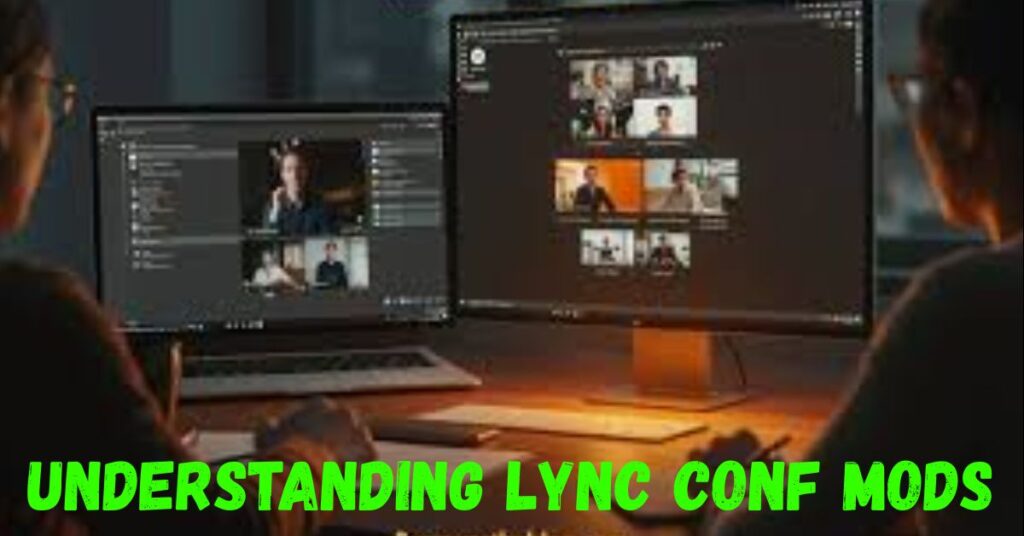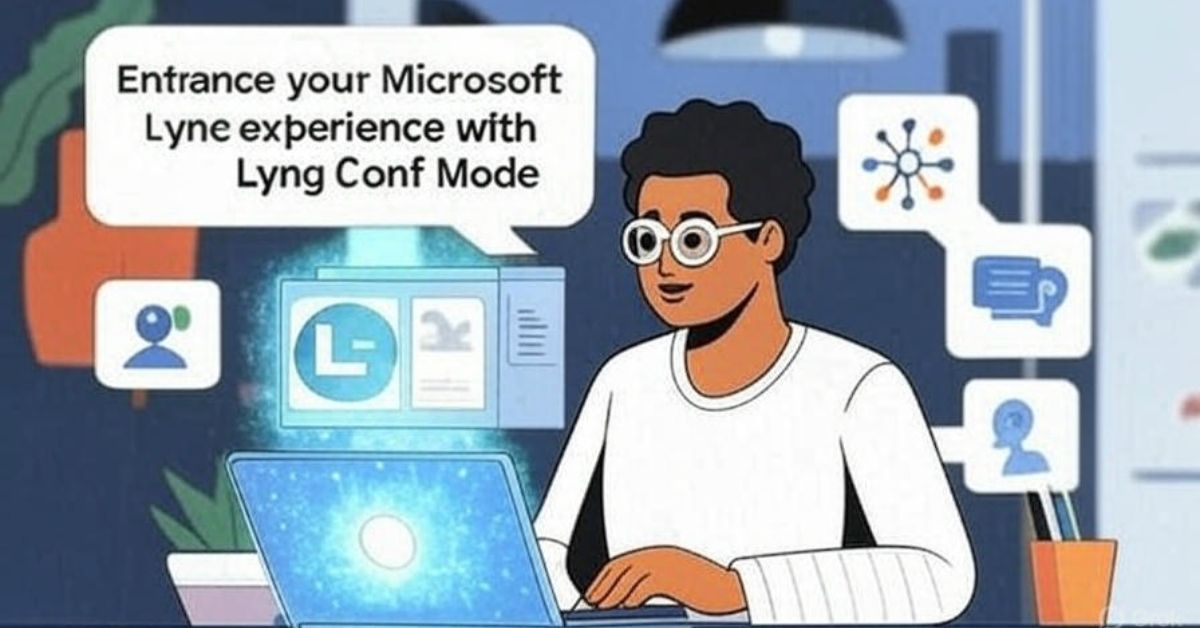Enhance Your Microsoft Lync Experience with Lync Conf Mods
Communication in the workplace has transformed in the last decade, passing from Lync and Skype for Business to Microsoft Teams.
Enhance Your Microsoft Lync Experience with Lync Conf Mods
Communication in the workplace has transformed in the last decade, passing from Lync and Skype for Business to Microsoft Teams.
Workplace communication has evolved over the past decade, transitioning from Lync and Skype for Business to the more robust Microsoft Teams. Instead of looking back and asking for modifications to past tools, organizations in 2025 can fully embrace the customization features that Teams offers today.
With Microsoft Teams, you can leverage the power of the Power Platform, develop custom apps, and set advanced meeting policies all of which were once only achievable through third-party mods.
These native capabilities help employees enjoy a seamless and tailored collaboration experience, enhancing productivity and communication across the board.
Understanding Lync Conf Mods

Lync Conf Mods offer a high level of customizability to Microsoft Lync, beyond simple settings. It allows businesses to customize their communication platform to suit their exact business needs and user preferences.
What are Lync Conf Mods?
Lync conferencing mods are essentially Microsoft Lync configuration modifications that extend its capabilities beyond those that are provided out of the box. From simple interface customization to complex integration with enterprise systems, these modifications vary widely.
- Custom configurations that transform standard Lync features into tailored solutions
- Extended functionality that addresses specific organizational needs
- Technical adaptations that optimize performance for various use cases
- User experience improvements that increase adoption and satisfaction
Unlike simple setting changes, true Lync Conf Mods often involve deeper system modifications, registry adjustments, or integration with third-party components. This makes them powerful tools for organizations with specific requirements that standard configurations cannot meet.
The Role of Mods in Customization
Customization through Lync Conf Mods plays a crucial role in maximizing the value of your communication investment. These modifications allow your organization to shape the platform according to your unique workflow and culture.
- Creates a tailored experience that aligns with your company’s specific needs
- Enables workflow optimization by adapting the tool to your processes rather than vice versa
- Provides competitive advantage through unique communication capabilities
- Supports brand consistency by aligning the interface with your visual identity
When implemented thoughtfully, these customizations can significantly improve user adoption rates. Employees are more likely to embrace tools that feel designed specifically for their needs rather than generic solutions requiring them to adapt their working style.
READ THIS BLOG: Chef Gotxen Godolix: The Culinary Revolutionary Transforming Modern Gastronomy
The Need for Lync Conf Mods
Despite its robust feature set, standard Microsoft Lync implementations often fall short in meeting specialized organizational requirements. Understanding these limitations helps identify where customizations can add the most value.
Common Limitations of Microsoft Lync
The default Lync configuration, while comprehensive, presents several challenges that can impact productivity and user satisfaction. Recognizing these limitations is the first step toward effective customization.
- Inflexible interface that doesn’t adapt to different departmental needs
- Limited integration options with specialized business applications
- Restricted customization of meeting experiences and permissions
- Standardized notification system that doesn’t allow for prioritization
- Basic reporting capabilities that lack detailed analytics
- Generic security settings that may not align with specific compliance requirements
These limitations often result in workarounds or the adoption of multiple communication tools, creating inefficiency and fragmentation. Lync Conf Mods address these gaps, allowing organizations to consolidate their communication within a single, optimized platform.
Real-World Examples
Understanding how other organizations have leveraged Lync Conf Mods provides valuable insight into their practical applications. These examples demonstrate how customizations solve specific business challenges.
- A multinational corporation implemented custom dial-in configurations for different regions, reducing international call costs by 47%
- A healthcare provider created specialized security protocols for patient communication, ensuring HIPAA compliance while maintaining ease of use
- A financial services firm developed custom notification hierarchies, ensuring critical alerts received immediate attention despite high message volumes
- A manufacturing company integrated production line status directly into presence indicators, improving response times to critical situations
- A customer service department implemented advanced chat functionality with automated response suggestions, increasing resolution rates by 23%
These examples illustrate how targeted modifications can address specific operational challenges, resulting in measurable improvements to efficiency, cost management, and service quality.
Types of Lync Conf Mods

Lync Conf Mods fall into several distinct categories, each addressing different aspects of the communication experience. Understanding these categories helps organizations identify which modifications will deliver the greatest value.
Interface Customizations
Visual and interactive elements play a crucial role in user adoption and efficiency. Interface customizations modify how users interact with the platform, creating a more intuitive and engaging experience.
- Theme modifications allow for company branding and improved visual hierarchy
- Layout adjustments can prioritize frequently used features for specific roles
- Custom icons and buttons improve navigation and feature recognition
- Personalized dashboards display relevant information based on user roles
- Interface scaling options enhance accessibility for users with different needs
These visual enhancements do more than improve aesthetics—they can significantly impact usability and efficiency. A thoughtfully designed interface reduces cognitive load and helps users quickly access the features they need most frequently.
Functional Enhancements
Beyond visual changes, functional enhancements modify how Lync operates, adding capabilities or improving existing features to better serve organizational needs.
- Extended presence states to provide more detailed availability information
- Custom notification systems allow for priority-based alerts
- Advanced scheduling tools simplify complex meeting arrangements
- Automated message handling routes communications based on content or sender
- Enhanced search capabilities improve information retrieval across conversations
- Custom shortcut keys speed up common actions for power users
These enhancements directly impact productivity by streamlining common tasks and adding capabilities that address specific operational requirements. They transform Lync from a generic communication tool into a specialized solution aligned with your workflow.
Integration with Third-Party Tools
One of the most powerful categories of Lync Conf Mods involves connecting the platform with other business systems, and creating a unified digital workplace solution.
- CRM integrations display customer information during calls or chats
- Document management system connections provide content access within conversations
- Project management tool synchronization links communications to specific tasks
- Analytics platform feeds deliver insights directly within the communication interface
- Custom API implementations enable specialized data exchanges with proprietary systems
These integrations eliminate context switching, keeping users within a single environment while accessing information from multiple systems. This approach not only saves time but also ensures that decisions are made with complete information readily available.
Security Enhancements
In today’s threat-laden environment, standard security features often require augmentation to meet specific compliance requirements or address unique risk profiles.
- Enhanced encryption protocols protect sensitive communications beyond standard levels
- Custom authentication methods integrate with specialized identity management systems
- Granular permission structures provide precise control over information access
- Data loss prevention mechanisms prevent the unauthorized sharing of sensitive content
- Advanced auditing capabilities track communication patterns for compliance purposes
- Automated compliance scanning flags potential policy violations in real-time
These security enhancements ensure that communication efficiency doesn’t come at the expense of data protection. They allow organizations to meet industry-specific regulations while maintaining a seamless user experience.
READ THIS BLOG: Master the Grid: The Ultimate Guide to Mashable’s NYT Connections Hints
How to Implement Lync Conf Mods

Successful implementation of Lync Conf Mods requires a structured approach that begins with clear objectives and ends with continuous improvement. Following these steps helps ensure that modifications deliver maximum value with minimal disruption.
Identify Needs
The foundation of effective customization lies in a thorough understanding of your organization’s specific requirements and pain points. This discovery phase should involve multiple stakeholders to capture diverse perspectives.
- Conduct user surveys to identify common frustrations and desired improvements
- Analyze support tickets to identify recurring issues that customizations might address
- Review workflow processes to identify communication bottlenecks and inefficiencies
- Benchmark against industry standards to identify capability gaps
- Involve representatives from different departments to understand varied requirements
This needs assessment should result in a prioritized list of potential modifications, evaluated based on business impact, technical feasibility, and implementation complexity. This prioritization ensures resources are directed toward changes that deliver the greatest value.
Research Mods
Once needs are identified, the next step involves researching available modification options that address those specific requirements. This research should consider both technical and organizational factors.
- Explore official Microsoft documentation for supported customization options
- Investigate third-party solutions designed specifically for Lync enhancement
- Consult with specialized partners experienced in Lync modifications
- Review case studies from organizations with similar requirements
- Evaluate compatibility with your specific Lync version and infrastructure
This research phase should culminate in a detailed implementation plan that outlines the specific modifications to be made, the resources required, and the expected outcomes. This plan serves as the roadmap for the technical implementation team.
Testing
Before deploying modifications across the organization, thorough testing is essential to identify potential issues and validate expected benefits. This testing should simulate real-world usage scenarios as closely as possible.
- Create a controlled test environment that mirrors your production setup
- Develop specific test cases based on expected use patterns
- Include representatives from different user groups in the testing process
- Document unexpected behaviors or performance impacts
- Measure improvements against pre-defined success metrics
- Test integration points with other systems thoroughly
Testing should be iterative, with modifications refined based on feedback until they meet quality and performance expectations. This thorough approach prevents disruptions when changes are deployed to the broader organization.
Roll Out
With testing complete, the implementation phase should follow a structured approach that minimizes disruption while providing adequate support for users adapting to changes.
- Consider a phased deployment starting with departments most likely to benefit
- Prepare clear documentation explaining new features and changes
- Develop training materials tailored to different user roles
- Establish a support process for addressing questions and issues
- Communicate the benefits of each modification to encourage adoption
- Provide multiple training options including self-service resources and guided sessions
This carefully managed rollout ensures that users understand not just how to use new features, but why they’ve been implemented. This understanding increases adoption rates and helps realize the expected benefits more quickly.
Collect Feedback
Implementation is not the end of the process—ongoing feedback collection and refinement ensure that modifications continue to meet evolving needs. This continuous improvement approach maximizes long-term value.
- Establish formal feedback channels for users to report issues or suggest improvements
- Monitor usage metrics to identify features that may need refinement
- Conduct regular check-ins with key stakeholders about the impact of changes
- Compare actual outcomes with expected benefits identified in planning
- Document lessons learned to improve future modification projects
This feedback loop ensures that customizations remain relevant and effective as business requirements evolve. It also builds user trust by demonstrating that their input directly influences the tools they use daily.
FREQUENTLY ASKED QUESTIONS
Do Lync Conf Mods work with Microsoft Teams?
Many modifications designed for Lync can be adapted for Teams, though the implementation approach may differ due to architectural changes between the platforms.
Will customizations break during updates?
Some modifications may require adjustment after major platform updates, which is why documenting implementations and testing after updates is essential.
Are there security risks associated with custom modifications?
Properly implemented modifications should enhance rather than compromise security, but improper implementations can create vulnerabilities.
Can modifications be implemented without technical expertise?
Basic customizations may be possible through administrative settings, but more advanced modifications typically require specialized technical knowledge.
How do we measure the ROI of Lync Conf Mods?
ROI can be measured through improved productivity metrics, reduced support tickets, increased user satisfaction scores, and specific business outcomes tied to communication efficiency.
Conclusion
In 2025, Microsoft Teams has fully replaced legacy platforms like Lync and Skype for Business.
Rather than pursuing modifications for outdated systems, organizations now leverage Teams’ built-in customization features including Power Platform integration, custom app development, and advanced meeting policies.
These native capabilities deliver the tailored collaboration experience previously sought through third-party modifications, streamlining enterprise communication within a modern, supported ecosystem.

Smith is a seasoned SEO expert with a passion for content writing, keyword research, and web development. He combines technical expertise with creative strategies to deliver exceptional digital solutions.
















